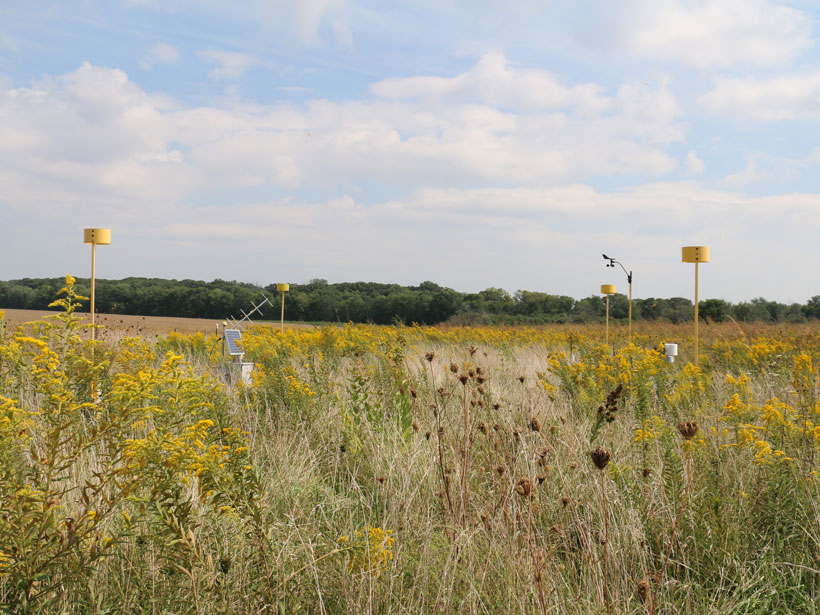Source: Water Resources Research
Our environment is constantly changing—today faster than ever, thanks in large part to human activities. Understanding the forces and feedbacks that drive the state of ecosystems is an important first step to either adapting to our changing planet or preventing runaway climate change.
The trouble is, the environment is a complex system. Many variables, processes, and feedbacks interact to produce the conditions of an ecosystem, and factors like rainfall—or its absence—can perturb that system’s balance. The complexity of these interactions makes environmental systems difficult to model and understand.
Now, in a new study, Goodwell and Kumar present an information partitioning methodology that allows researchers to identify the unique (individual), redundant (overlapping), and synergistic (jointly acting) factors that drive behavior in an ecohydrologic system. In such systems, precipitation and atmospheric and soil processes all influence each other on various timescales; water, for example, can cause a plant to open its stomata in mere seconds, or it can carve canyons into hard landscapes over centuries.
In a companion paper, Goodwell and Kumar applied their framework, called a Temporal Information Partitioning Network (TIPnet), to the study of short-term variability in an ecohydrologic system in the Midwest. The team constructed the TIPNet with minute-by-minute weather data from the Sangamon River Forest Preserve in central Illinois over a 180-day period in 2015 between April and October. A weather station has operated there on a restored prairie, surrounded by corn and soybean fields, since 2014, collecting data on solar radiation, wind speed, precipitation, humidity, temperature, and leaf wetness. The team compared daytime and nighttime data sets and those collected during dry periods to those with rainfall or dew formation to find out which variables under which conditions were the strongest drivers of the dynamic system.
The study revealed that variables influenced each other on timescales between 20 and 40 minutes on average, and interactions tended to be faster on rainy days and dry nights. During the day, solar radiation and air temperature tended to redundantly influence other variables, indicating their synchronization. Meanwhile, wind speed and relative humidity usually influenced the ecosystem synergistically during the day, indicating their joint influence. At night, however, wind speed and temperature provided more unique influences over ecosystem variables.
The studies provide researchers with a means to characterize shifts in the connectivity within an ecosystem over time, which could help scientists predict how changes to just one variable, such as land use or rainfall, could lead to changes throughout an ecosystem. Projecting how ecosystems might respond to perturbations will become ever more important as our climate continues to change. (Water Resources Research, https://doi.org/10.1002/2016WR020216, 2017; Water Resources Research, https://doi.org/10.1002/2016WR020218, 2017)
—Kate Wheeling, Freelance Writer
Citation:
Wheeling, K. (2017), What causes ecological shifts?, Eos, 98, https://doi.org/10.1029/2017EO083237. Published on 03 October 2017.
Text © 2017. The authors. CC BY-NC-ND 3.0
Except where otherwise noted, images are subject to copyright. Any reuse without express permission from the copyright owner is prohibited.

